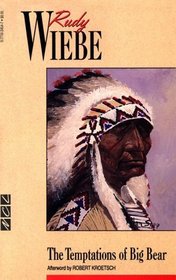Search -
The Temptations of Big Bear (New Canadian Library)
The Temptations of Big Bear - New Canadian Library
Author:
Early in his writing career, Rudy Wiebe’s imagination was caught by a heroic character of Cree and Ojibwa ancestry whose birthplace was within twenty-five miles of where Wiebe himself was born 110 years later. The man’s name translated into English was Big Bear, and he came to be the subject of one of Wiebe’s most highly praise... more »
Author:
Early in his writing career, Rudy Wiebe’s imagination was caught by a heroic character of Cree and Ojibwa ancestry whose birthplace was within twenty-five miles of where Wiebe himself was born 110 years later. The man’s name translated into English was Big Bear, and he came to be the subject of one of Wiebe’s most highly praise... more »
ISBN-13: 9780771034541
ISBN-10: 0771034547
Publication Date: 2/25/1995
Pages: 408
Rating: ?
ISBN-10: 0771034547
Publication Date: 2/25/1995
Pages: 408
Rating: ?
0 stars, based on 0 rating
Publisher: New Canadian Library
Book Type: Paperback
Members Wishing: 0
Reviews: Amazon | Write a Review
Book Type: Paperback
Members Wishing: 0
Reviews: Amazon | Write a Review
Genres:
- Literature & Fiction >> General >> Contemporary
- Literature & Fiction >> General >> Literary
- Literature & Fiction >> Genre Fiction >> Historical
- Literature & Fiction >> World Literature >> Canadian >> General
- Literature & Fiction >> Authors, A-Z >> ( K ) >> Kroetsch, Robert
- Literature & Fiction >> Authors, A-Z >> ( W ) >> Wiebe, Rudy




